
Collingwood College is a college of Durham University in England. It is the largest of Durham's undergraduate colleges with around 1800 students. Founded in 1972 as the first purpose-built, mixed-sex college in Durham, it is named after the mathematician Sir Edward Collingwood (1900–1970), who was a former Chair of the Council of Durham University.
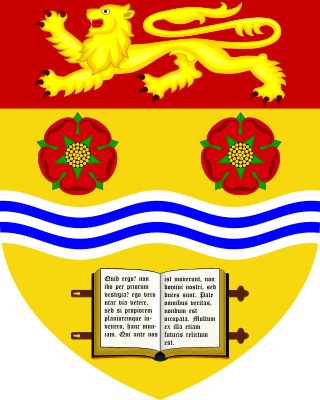
Lancaster University is a public research university in Lancaster, Lancashire, England. The university was established in 1964 by royal charter, as one of several new universities created in the 1960s.

Grizedale College is a college of the University of Lancaster in Lancashire, England. The college is named after the Grizedale Forest area of Lancashire North of the Sands. When it was built it was situated at the southern extremity of the Bailrigg campus. The development of the south west campus has meant that college is now considered to be one of the more centrally located colleges. It is currently the fifth largest in terms of number of students.

Girton College is one of the 31 constituent colleges of the University of Cambridge. The college was established in 1869 by Emily Davies and Barbara Bodichon as the first women's college in Cambridge. In 1948, it was granted full college status by the university, marking the official admittance of women to the university. In 1976, it was the first Cambridge women's college to become coeducational.

Trevelyan College is a college of Durham University, England. Founded in 1966, the college takes its name from social historian George Macaulay Trevelyan, Chancellor of the university from 1950 to 1957. Originally an all-female college, the college became fully mixed in 1992.
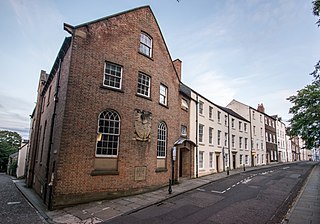
St Chad's College is a recognised (independent) college of Durham University in England, founded in 1904 as an Anglican hall for the training of Church of England clergy. The main part of the college is located on the Bailey, occupying nine historic buildings at the east end of Durham Cathedral. It neighbours Hatfield College to its north, while St John's College and St Cuthbert's Society are to its south. The college is named after Saint Chad, a seventh-century Anglo-Saxon bishop known for spreading Christianity in the Mercian kingdom.

St Aidan's College is a college of the University of Durham in England. It had its origins in 1895 as the association of women home students, formalised in 1947 as St Aidan's Society. In 1961, it became a full college of the university, and in 1964 moved to new modernist buildings on Elvet Hill designed by Sir Basil Spence.

St Mary's College is a college of Durham University in England. Following the grant of a supplemental charter in 1895 allowing women to receive degrees of the university, St Mary's was founded as the Women's Hostel in 1899, adopting its present name in May 1920.

Van Mildert College is a college of Durham University in England. Founded in 1965, it takes its name from William Van Mildert, Prince-Bishop of Durham from 1826 to 1836 and a leading figure in the University's 1832 foundation. Originally an all-male college, it became co-educational in 1972 with the admission of female undergraduates.

John Snow College is a constituent college of Durham University. The college was founded in 2001 on the University's Queen's Campus in Stockton-on-Tees, before moving to Durham in 2018. The College takes its name from the nineteenth-century Yorkshire physician John Snow, one of the founders of modern epidemiology.

Lonsdale College is a constituent college of Lancaster University. It was one of the two founding colleges, originally built when the university first opened in 1964. It is also one of the largest colleges on campus in terms of Junior Common Room membership, with over 1,400 undergraduates. Like most other colleges in the university, the college is named after a region of the traditional county of Lancashire. The college takes its name from the Lonsdale area, the valley of the River Lune. The college is not to be confused with Lonsdale College, Oxford which is attended by Inspector Morse in the novels by Colin Dexter. Members of Lonsdale are referred to as Lonsdelians.
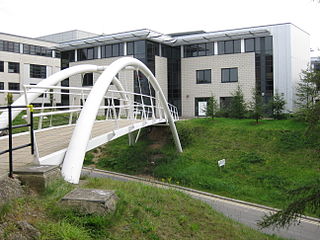
Alcuin College is a college of the University of York located on Siward's Howe in the English city of York in the county of Yorkshire.

Fylde College is a constituent college of the University of Lancaster, in Lancashire, England. The college was the sixth of the university’s colleges. Construction of the college buildings began in 1968 and the college began accepting students in 1969. The College officially opened in 1971. The college is named after the Fylde area of Lancashire.
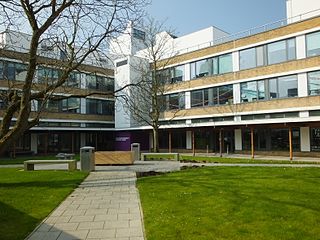
Bowland College is the oldest and fourth largest constituent college of Lancaster University. The college was named after the Forest of Bowland, to the east of Lancaster. Members of the college are informally referred to as Bowlanders.
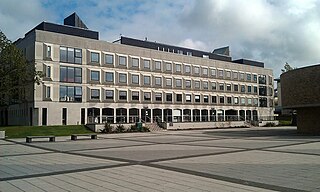
The County College, also known as County College or County, is a constituent college of the University of Lancaster. The establishment of the college was financed through the benefaction of Lancashire County Council and it is named after it. The original college building, County Main, was opened by HM The Queen in 1969.
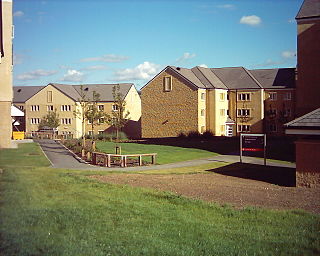
Cartmel College is a residential college of Lancaster University, England and was founded in 1968. It is named after the Cartmel Peninsula of "Lancashire north of the sands" which was once known as The Land of Cartmel. The college buildings were originally sited at the north end of the university's Bailrigg campus and extended in 1969. In 2004, the college was relocated around Barker House Farm in a new development in the southwest of the campus called Alexandra Park.

Graduate College is the largest college at Lancaster University, and only postgraduate college. The college's membership consists of all postgraduate students at the university, including Lancaster graduates who were members of other colleges as undergraduates.

Pendle College is one of the constituent colleges of the University of Lancaster, England. Founded in 1974, the college is named after the Pendle witches of 1612, from the area around Pendle Hill in East Lancashire. The term "Pendle" is associated with a great deal of fantasy and legend.
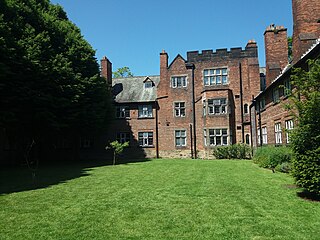
Hulme Hall is a traditional University of Manchester hall of residence situated at the Victoria Park Campus in Rusholme, Manchester, housing 300 students. It has a range of facilities including the John Hartshorne Centre: a 300 seat lecture theatre with attached seminar rooms; a library; Junior Common Room and study spaces; music room; old dining hall; the Victoria Park bar; and chapel.
The Lancaster University Students' Union (LUSU) is a students' union at Lancaster University in Lancashire, England. It is a registered company and charity overseen by a board of trustees. Politically, it is led by six sabbatical officers - a President and five Vice-Presidents - who are elected annually by the student membership.






















